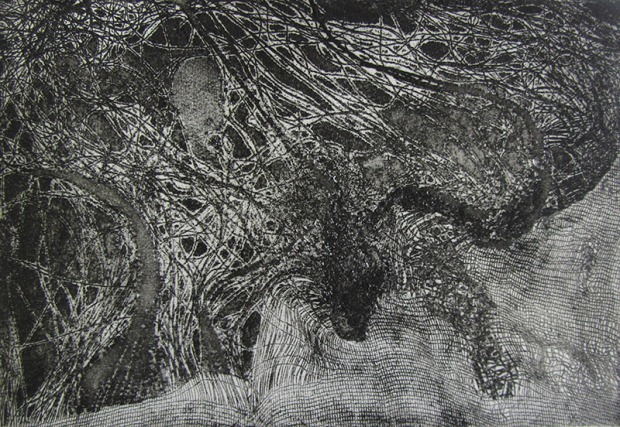
First version
I recently did another 3 day etching course. It was great to be back amongst the inks and smells of the etching studio at Camberwell College of Arts, but 3 days is hardly enough time to get your juices flowing with a process as slow and methodical as etching. (Many thanks to the tutor Brian Hodgson for his generous input and direction).
This time I tried taking an impression of some scrim (rough fabric used in the inking process) using a soft ground on a zinc plate, then etched it in stages to create some deeper lines and some more delicate ones. The most successful prints were the ones where I inked the plate using a couple of different rusty colours, and the blind embossings. The prints are reminiscent of tributaries and turbulent geographical features.

Second version – printed with colour gradient

Third version – after some lines were etched for longer

Fourth version – blind embossing
My other experiment was using a photo-polymer plate, a type of light-sensitive plate which can be exposed using a UV exposure unit (normally used for screen printing) and washed in water.. so no harsh acids. The potential for bringing digital media into the workflow but retaining the physicality and unpredictability of printmaking is very exciting. I did a few tests with this flower image which gave a very dark print even though the original image was quite light. There doesn’t seem to be as much creativity in the inking process as there is with acid-etched plates but still something I’d like to play around with more, especially as you don’t need access to an etching studio to produce the plates.

Photo polymer plate etching

